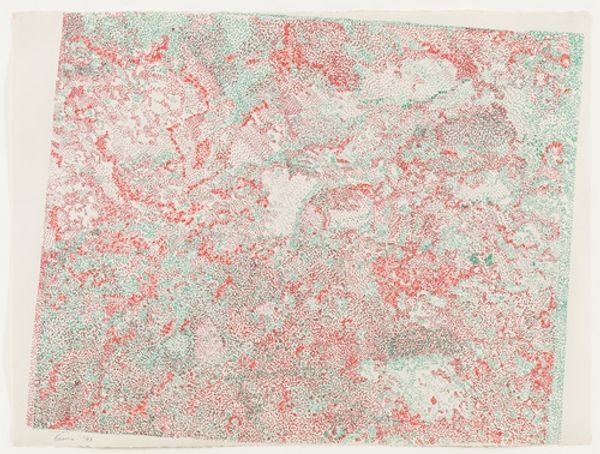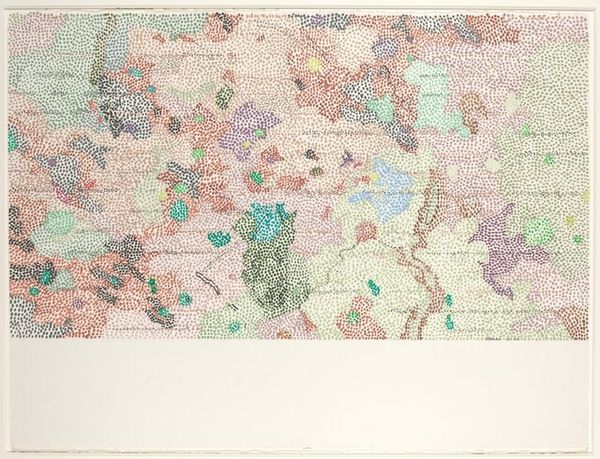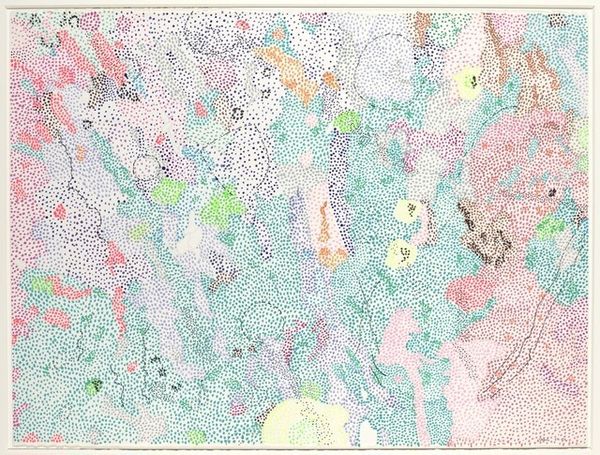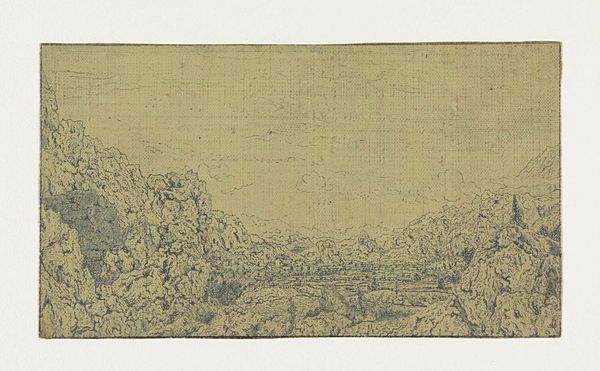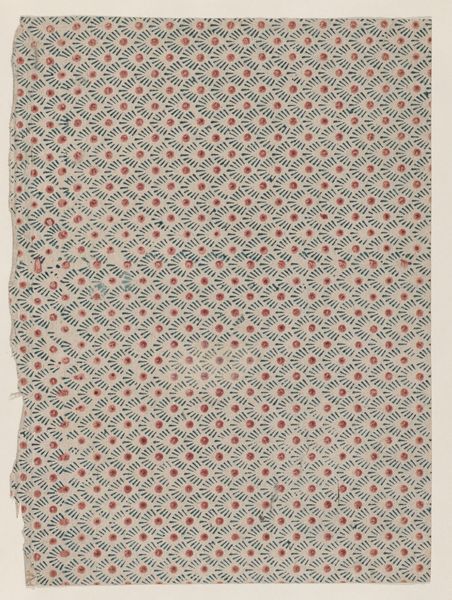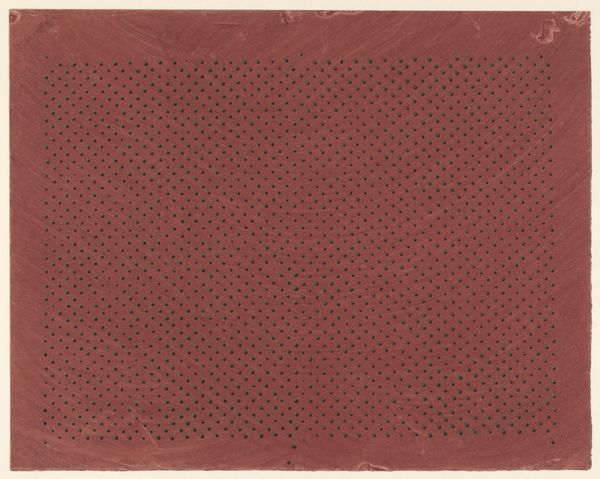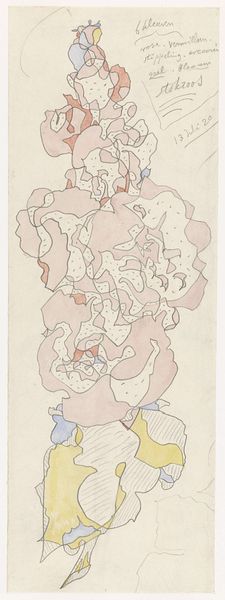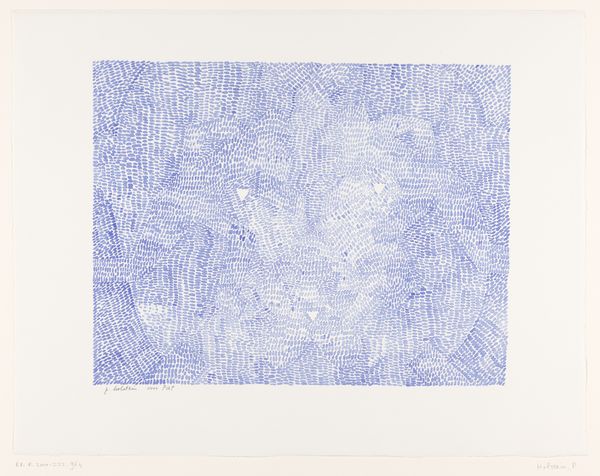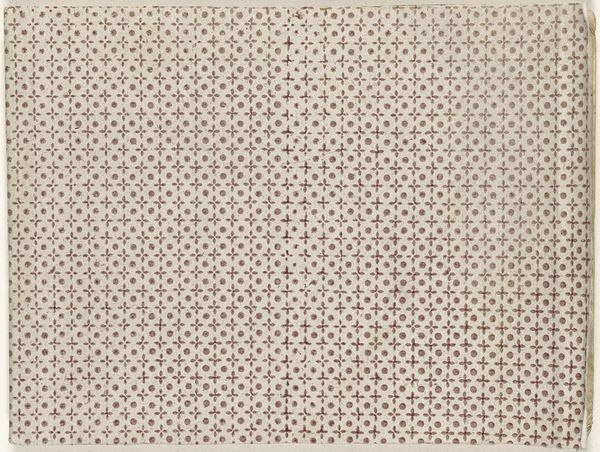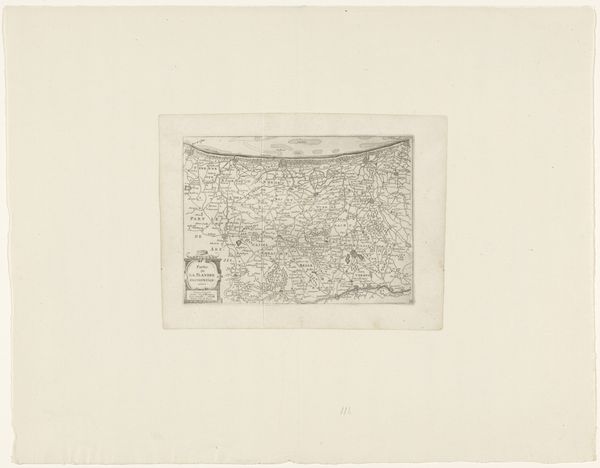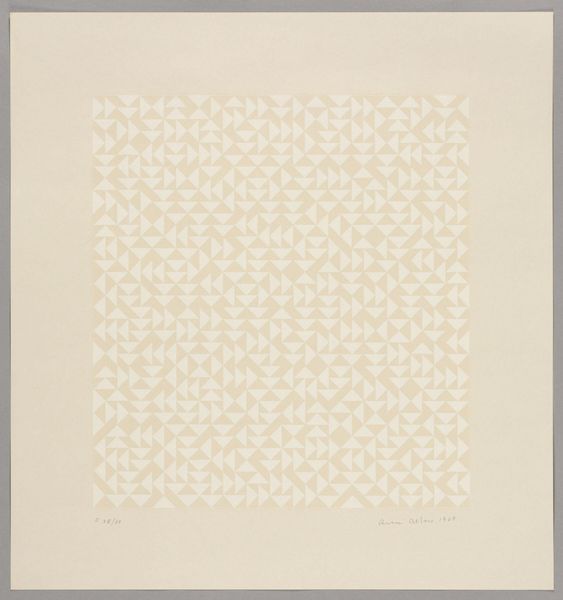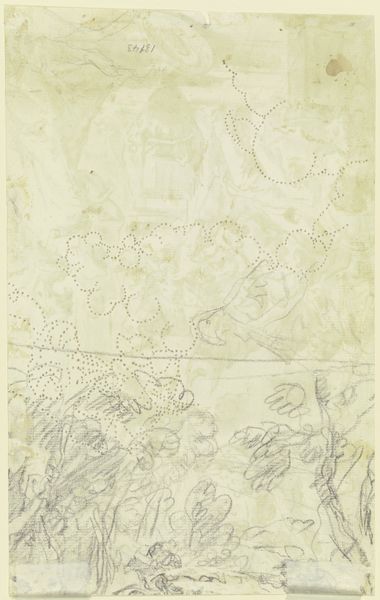
#
rippled sketch texture
#
naturalistic pattern
#
hand-embroidered
#
pattern background
#
organic pattern
#
flower pattern
#
intricate pattern
#
imprinted textile
#
layered pattern
#
pattern in nature
Copyright: Nancy Graves,Fair Use
Editor: Right, let’s talk about Nancy Graves' "Maskelyne DA Region of the Moon" from 1972, part of her Lunar Maps series. The work gives a sense of the cosmic rendered in what looks like a pointillist style. How do you interpret this exploration of lunar topography in the context of art and history? Curator: It's fascinating, isn't it? The late 60s and early 70s saw a surge in public interest in space, fueled by the Apollo missions. Artists were not immune to this cultural fascination. Graves' choice to map the moon ties into this broader societal engagement, but what's important is *how* she chooses to represent it. Does it feel purely scientific, or something else? Editor: I think something else. It feels…mediated. Like a scientific observation filtered through a very personal artistic lens. There’s a tension between objectivity and subjectivity, right? Curator: Exactly. Graves is not just presenting data; she's imbuing it with artistic sensibility. This speaks to a broader critique of institutions and power structures in art history. Who decides what's "valid" knowledge, or a valid subject for art? Editor: So, she's sort of challenging the boundaries between science, art, and public perception, using the moon as a canvas. Curator: Precisely! And notice the scale and materials, likely chosen to create that precise feeling of cosmic boundlessness on a reachable artistic object. Considering the socio-political climate of the time – the questioning of authority, the rise of new perspectives – this lunar map becomes more than just an image. It's a statement about knowledge, power, and how we visualize our place in the universe. Editor: That makes me think about the art world's fascination with scientific discovery! It’s all part of a constant dialogue. Curator: And how the 'moonshot' ambitions of NASA intersected with artistic expression, ultimately broadening what could be considered 'art' at all.
Comments
No comments
Be the first to comment and join the conversation on the ultimate creative platform.
